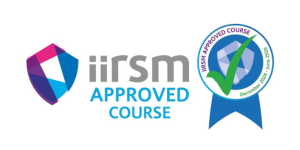TS90 | 3 days
Aviation is a high-hazard industry which requires significant investment to reduce risks to a tolerable level. Whilst regulatory compliance can achieve a base level of risk reduction, ICAO and EASA regulations require aviation operators and stakeholders to apply further Safety Risk Management activities to reduce the potential effect of operationally specific risks.
This requires continual recognition of hazards, objective assessment of risks and implementing effective risk reduction measures. A robust risk monitoring and review process maintains performance and captures emergent risks. This approach increases operational efficiency by targeting limited resources where they are most needed.
This course enables delegates to understand and apply risk management principles and methods to make informed risk reduction decisions within their organisations. Delivered by consultants with a wealth of practical safety management experience, this course provides the essential skills for risk management competence in your staff.

Virtual Classroom
Bracknell Academy
Virtual Classroom
Bracknell Academy
Virtual Classroom
Delivered exclusively for your company
How will this course benefit me?
This practically focused course enables you to:
• Establish and justify whether you have done enough to reduce the risks your organisation and people are exposed to
• Understand whether fundamental Risk Management principles such as ALARP and Tolerable have been applied and adhered to
• Distinguish between safety risk and enterprise risk, which is important to ensure risk reduction effort is focused in the appropriate areas of the organisation’s risk portfolio
• Understand what is reasonable, practicable, effective and efficient in the reduction of risk
• Present coherent arguments for risk reduction measures to receive investment and resource
• Monitor and review risk reduction effect and residual risk exposure, including organisational and environmental change
• Recognise sources of emergent risk from internal and external stakeholders, such as suppliers, procurement teams, equipment designers, contractors and customers and how they contribute to an organisation’s risk portfolio.
• Identify differences in language, perspective, coordination and duty holder empathy which can impact risk status
• Reduce the gap between the risk managed during operational activities and risks held and accounted for by the organisation’s executive
• Link low probability but credible harmful events to emergency response plans
Key areas of focus
This course explores theoretical aspects of Safety Risk Management and the practical application of key principles and processes in an operational context. The course content includes:
• Risk Management principles
• Regulatory framework and responsibilities
• Practical skills for Hazard Identification, Risk Assessment and Risk Reduction
• Reducing risks to ALARP and SFAIRP levels
• Cost Benefit Analysis
• Risk visualisation
• Validating risk controls using safety management activities
• The relationship between Risk Management and Emergency Response Planning
• Change Management considerations
Is this course right for me?
This course is suitable for:
• Accountable Managers and Post Holders wanting to understand their SRM regulatory requirement
• Safety Managers, Risk Managers and Safety teams advising Accountable Managers
• Safety Analysts and/or Investigators
• Personnel in Flight Operations, Maintenance, Air Traffic and Ground Handling sectors responsible for risk management activities
• Auditors, Investigators and Regulators who interact with safety risk management
This course can also be delivered in-company at your site facilities and, if necessary, adapted so that it meets the needs of managers looking to induct their teams and larger workforce in the concepts of Safety Management. Speak to a Baines Simmons learning advisor to find out more.

Baines Simmons is an official training solution provider and distributor of Wolters Kluwer’s Enablon Bowtie Suite solutions.
Prerequisites:
We recommend that you have attended our TS02 Practical application of Safety Management Systems (SMS) course or equivalent. Experience in role for at least 6 months in order to understand organisational context is also preferable but not essential.
Course Details
Course format: This course is a balanced mix of group discussions, flipchart work and PowerPoint presentations. Managed syndicate exercises give you the opportunity to practise the application and evaluation of new processes and techniques.
Course level: Practitioner Level Training (P) is suitable for those who have worked in the subject for some time, are familiar with core terminologies and concepts or are looking to develop their knowledge and practical understanding.
Assessment process: No formal assessment. Formative feedback is provided by the facilitator.
Course size: 12 persons maximum for virtual, Aviation Safety Academy or on-site at your facility.
There are numerous terminologies in Risk Management which can hinder identifying and communicating risk to accountable people, regulators, external stakeholders and employees. This course clarifies risk management language to help simplify the meaning of these terms.
Baines Simmons applies a 5-step process to risk management, founded on the standards, recommended practices and regulations of ICAO and EASA but amalgamated with recognised risk management best practice across industry.
This course teaches delegates to apply tools such as BowTie, ARMS ERC, Cost Benefit Analysis, Hazard Risk Matrixes to help manage risk proactively and effectively.
The most widely recognised criterion in use to judge when an organisation has done enough to manage its risk is “As Low as Reasonably Practicable” or ALARP. This course explains the criterion of ALARP through the Baines Simmons ALARP Flask model to build a robust ALARP argument for sufficient risk reduction effort.